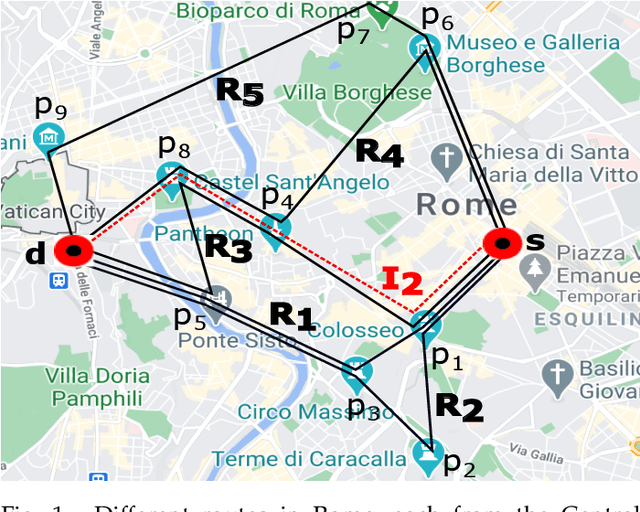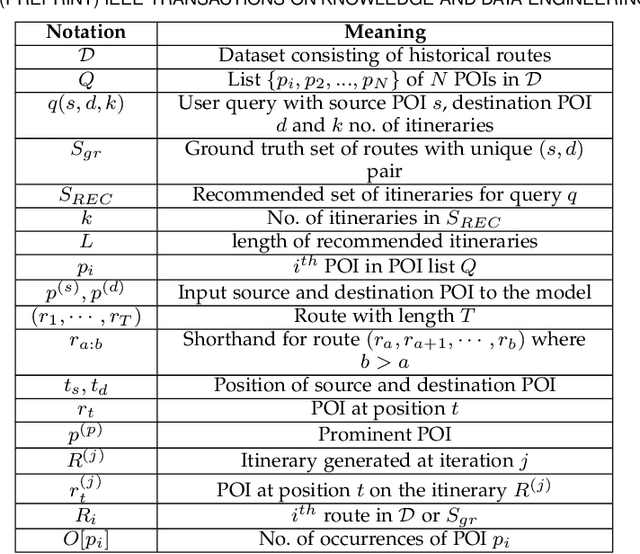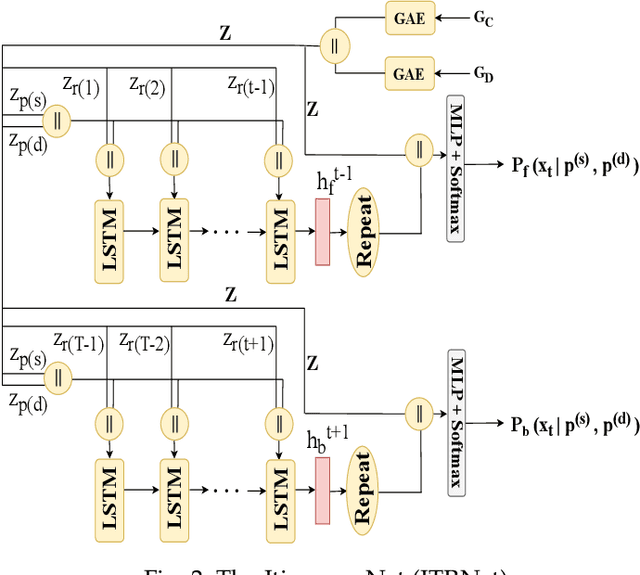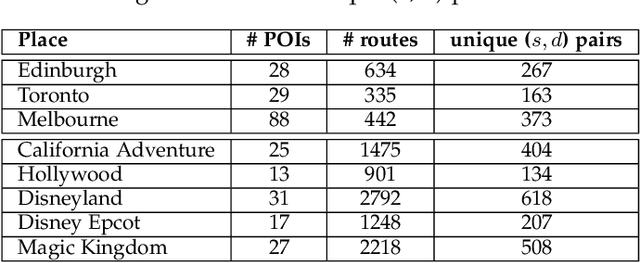Syed Md. Mukit Rashid
DeepAltTrip: Top-k Alternative Itineraries for Trip Recommendation
Sep 08, 2021



Abstract:Trip itinerary recommendation finds an ordered sequence of Points-of-Interest (POIs) from a large number of candidate POIs in a city. In this paper, we propose a deep learning-based framework, called DeepAltTrip, that learns to recommend top-k alternative itineraries for given source and destination POIs. These alternative itineraries would be not only popular given the historical routes adopted by past users but also dissimilar (or diverse) to each other. The DeepAltTrip consists of two major components: (i) Itinerary Net (ITRNet) which estimates the likelihood of POIs on an itinerary by using graph autoencoders and two (forward and backward) LSTMs; and (ii) a route generation procedure to generate k diverse itineraries passing through relevant POIs obtained using ITRNet. For the route generation step, we propose a novel sampling algorithm that can seamlessly handle a wide variety of user-defined constraints. To the best of our knowledge, this is the first work that learns from historical trips to provide a set of alternative itineraries to the users. Extensive experiments conducted on eight popular real-world datasets show the effectiveness and efficacy of our approach over state-of-the-art methods.
CCCNet: An Attention Based Deep Learning Framework for Categorized Crowd Counting
Dec 12, 2019



Abstract:Crowd counting problem that counts the number of people in an image has been extensively studied in recent years. In this paper, we introduce a new variant of crowd counting problem, namely "Categorized Crowd Counting", that counts the number of people sitting and standing in a given image. Categorized crowd counting has many real-world applications such as crowd monitoring, customer service, and resource management. The major challenges in categorized crowd counting come from high occlusion, perspective distortion and the seemingly identical upper body posture of sitting and standing persons. Existing density map based approaches perform well to approximate a large crowd, but lose important local information necessary for categorization. On the other hand, traditional detection-based approaches perform poorly in occluded environments, especially when the crowd size gets bigger. Hence, to solve the categorized crowd counting problem, we develop a novel attention-based deep learning framework that addresses the above limitations. In particular, our approach works in three phases: i) We first generate basic detection based sitting and standing density maps to capture the local information; ii) Then, we generate a crowd counting based density map as global counting feature; iii) Finally, we have a cross-branch segregating refinement phase that splits the crowd density map into final sitting and standing density maps using attention mechanism. Extensive experiments show the efficacy of our approach in solving the categorized crowd counting problem.
 Add to Chrome
Add to Chrome Add to Firefox
Add to Firefox Add to Edge
Add to Edge